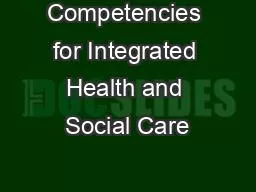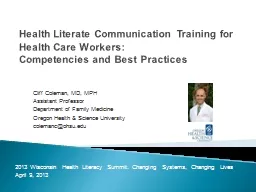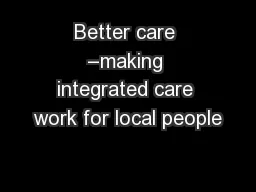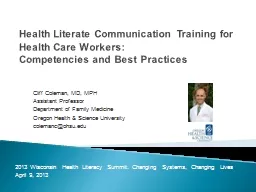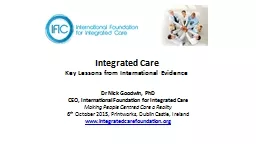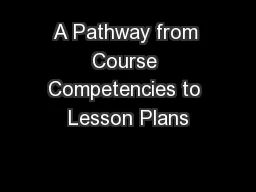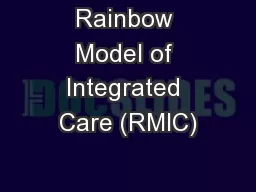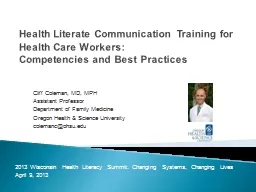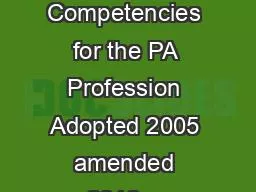PPT-Competencies for Integrated Health and Social Care
Author : jezebelfox | Published Date : 2020-08-05
Developing a competent workforce Dr Viktoria Stein Head of the Integrated Care Academy International Foundation for Integrated Care IFIC amp Edge Hill University
Presentation Embed Code
Download Presentation
Download Presentation The PPT/PDF document "Competencies for Integrated Health and S..." is the property of its rightful owner. Permission is granted to download and print the materials on this website for personal, non-commercial use only, and to display it on your personal computer provided you do not modify the materials and that you retain all copyright notices contained in the materials. By downloading content from our website, you accept the terms of this agreement.
Competencies for Integrated Health and Social Care: Transcript
Download Rules Of Document
"Competencies for Integrated Health and Social Care"The content belongs to its owner. You may download and print it for personal use, without modification, and keep all copyright notices. By downloading, you agree to these terms.
Related Documents

